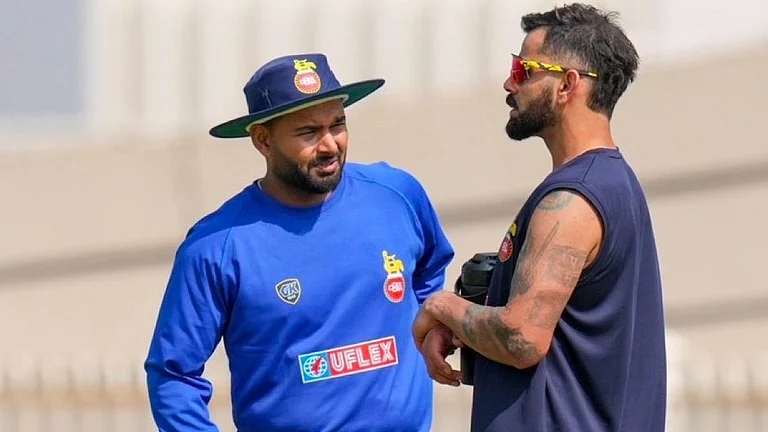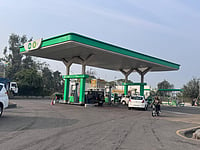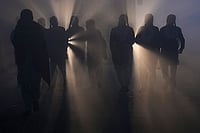FORECASTING," says R. Santhaam, executive vice-president, Hindustan Motors, "is tough in the best of times. Even tougher when the industry and economy are changing at such a rapid pace." And thanks to these rapid changes, automobile majors, market research organisations and industry associations are in an embarrassing hurry to update their car market forecasts, touching them up with a lot more optimism.
Consider the various estimates made. Early last year, the Association of Indian Automobile Manufacturers (AIAM) forecasted sales of 2,61,600 cars for 1995-96. And were off target by a whopping 83,755 cars, as the market surged by 30 per cent plus. Estimates about market size in the year 2000 vary wildly. AIAM's demand forecast of 8.5 lakh cars by 2000 AD is the most respected, though estimates by other market research agencies and automobile majors vary from as high as a million to international market research organisation DRI/McGraw Hill's 4,32,000. DRI/McGraw Hill is currently in the process of checking its assumptions and upping the estimate. As are McKinsey Consulting and the Economist Intelligence Unit.
Strangely enough, even the most optimistic study can't banish the spectre of oversupply. Says T. Fujisaki, president and CEO, Honda Siel Cars India: "If all plans, as reported in newspapers, materialise, the total installed capacity for passenger cars may touch more than 13 lakh units by 2000. Therefore, there's a possible case of oversupply, as per projections currently available." His sentiments are echoed by Jagdish Khattar, executive director, marketing, Mar-uti Udyog: "The cake won't be as large as people expect it to be."
And it's not just the fear of oversupply that is haunting auto majors; it's the prospect of overcrowding in certain segments of the market that's more menacing. Primarily because most of the car majors stepping into the market are targeting what is today the fastest growing segment: the 1.3-1.6 litre car, commonly known as the 'subcompact' abroad and as the 'mid-sized car' in India, priced between Rs 4 lakh and Rs 10 lakh. DCM-Daewoo's Cielo, General Motors' Opel Astra, Mahindra-Ford's Escort, Maruti's Esteem, PAL-Peugeot's Peugeot 309, Hindustan Motors' Lancer, Honda Siel's and Hyundai's yet-to-be-decided models will all fall in this category. Though, as of date, this segment accounts for less than 30 per cent of the market, the industry expects it to form the backbone of the market and account for anywhere between 30 and 50 per cent by 2000. "The subcompacts are the largest selling cars throughout the world. In fact, the mid-sized car might form the lower end of the market in years to come," says Santhanam. DCM-Daewoo Managing Director S.G. Awasthi expects this segment to contribute 50 per cent of total car sales, or roughly 4 lakh units (his estimate of total car sales by 2000: 8 lakh units), while Fujisaki expects it to contribute between 30-35 per cent or between 2.5 lakh to 3 lakh units (AD 2000 total sales estimate: 8.5 lakh units). At the same time, Khattar expects subcompacts to contribute 40 per cent or between 2.5 lakh to 3 lakh units (AD 2000 total sales estimate: 6.5 lakh to 7.5 lakh units) and Santhanam's bet is 2.5 lakh units.
Even if one were to take Awasthi's estimate, the most optimistic by far, of 4 lakh subcompacts by the year 2000, there's a clear case of oversupply. And if the current market scenario is any indicator, then Awasthi's optimistic predictions will remain just that: optimistic. Recently, dealers of both DCM-Daewoo and Maruti have begun offering discounts on the Cielo and Esteem. Both manufacturers have tied up with consumer finance companies to offer cut-price hire purchase schemes. Clearly, demand has not picked up as per expectation. Surprising, considering that so far, only 45,000 Esteems and 17,000 Cielos have been delivered, and only 31,000 Opel Astras and over a lakh Cielos have been booked.
To be fair to some of the automobile companies, they realise that oversupply, especially in the subcompact segment, might be the norm in the future and are attempting to hedge their bets by making a belated entry into the small car market. At least three manufacturers—DCM-Daewoo, Hindustan Motors and Telco—have mapped out firm plans for this segment. Their deterrent: the hugely successful Maruti 800 which corners roughly 60 per cent of the total market. Not only does it have a near monopoly in this segment, it has managed to keep potential competitors at bay, since they are unable to offer a similar product at a competitive price.
But, as these three companies repeatedly point out, the current Maruti 800 model is nearly a decade old and will soon be bordering on the obsolete. Khattar, however, prefers to dismiss that possibility as a minor irritant. "How many years did the legendary Volkswagen Beetle sell?" he asks, adding that Maruti has been upgrading the basic model regularly. But other car companies still expect to score with contemporary products. Daewoo and Telco, for instance, are currently developing their versions of an 800 cc car, which—if all goes well—will be launched within two years, while Hindustan Motors might launch its
Minica even earlier. By doing so, not only do these companies avoid putting their eggs in one basket, but majors like Daewoo (soon, market reports suggest, to drop the DCM name) also get the added flexibility of varying production of various models as per changing market demand. Production lines will be geared to design both the economy and the subcompact models. So if the economy car segment booms faster than the market for subcompacts, Daewoo production goes full steam with the economy model, and vice-versa if the market scenario turns out differently. In addition, since the models are expected to be state-of the-art, the potential for exports in case of excess supply is wide open, which is something Daewoo is planning for the Cielo in any case.
So which automakers will survive the impending shakeout? "The number of players is not important," claims Awasthi, "their seriousness is." Ditto Khattar. "A company's sustaining power will be the determining factor." And in a sense, DCM-Daewoo has already displayed its staying power. The company, which worked out its import costs last year when the dollar was hovering around Rs 32, today imports its completely knocked down kits (CKDs) with the dollar at roughly Rs 36. Yet, it has managed to absorb the extra costs and has as yet refrained from increasing prices, something which General Motors wasn't able to manage, compelling it to raise the price of Opel Astra by Rs 30,000 last week.
The only other option to reduce import costs is indigenisation, for which all automakers have provided a specified time-frame to the Government. However, initially at least, some auto companies, like General Motors and Honda-Siel, aim to produce only around 30,000 to 40,000 cars a year. "Where will they get component suppliers for such small volumes?" Khattar asks. Point taken, for companies like Maruti (estimated production by 2000: 4.5 lakh units), DCM-Daewoo (2.25 lakh units by 2000), Ford (1.5 lakh units), Hindustan Motors (1 lakh) and Telco are expected to offer better opportunities for component manufacturers and thus monopolise their services. And not just component manufacturers, why should a Maruti car dealer, for instance, shift to some other company when Maruti gives him volumes of 500 cars a month, while the other company can assure him just 50 a month?
So, while the market researchers brush up their studies with a touch of optimism and car companies worry that even those additional numbers won't suffice, both brace themselves for a round of cut-throat competition. The consumer can at least be sure that his days of waiting in queue for a car are over. Delivery on demand and problems of plenty will soon be his keys to the car of the future.


























